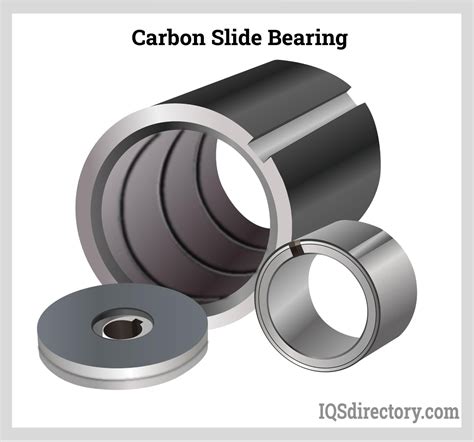Slide Bearings: Guiding Motion with Precision and Durability
Introduction
Slide bearings, also known as sliding bearings or plain bearings, are fundamental components in machinery and mechanical systems, responsible for supporting rotating or linear motion while minimizing friction and wear. Their simplicity and cost-effectiveness make them ubiquitous in a wide range of industrial and everyday applications.
Principles of Operation
Slide bearings function on the principle of sliding contact between two surfaces: a rotating or linear shaft (journal) and a stationary bearing (liner). The liner material is typically a low-friction, wear-resistant composite that provides a sliding surface for the shaft.

The primary purpose of a slide bearing is to support the load applied to the shaft, ensuring smooth and accurate motion. They also reduce friction, minimizing energy losses and heat generation. By distributing the load over a wider area, slide bearings prevent excessive wear on both the shaft and the bearing itself.

Types of Slide Bearings
Slide bearings come in various types, each designed for specific applications and load conditions:
-
Journal bearings: Support rotating shafts, typically in radial loads.
-
Thrust bearings: Designed for axial loads, supporting thrust forces along the shaft.
-
Sleeve bearings: Enclose the entire journal, providing a full cylindrical contact surface.
-
Bushings: Inserted into a housing, they provide a bearing surface for a rotating shaft.
-
Slipper bearings: Shaped like a shoe, they support motion along a flat surface.
Materials for Slide Bearings
The selection of bearing material is crucial for performance and durability:

-
Metal alloys: Bronze, steel, and aluminum offer high strength and wear resistance.
-
Polymers: Teflon (PTFE), nylon, and acetal provide low friction and are suitable for corrosive environments.
-
Composites: Combine metal alloys and polymers, offering a balance of strength and low friction.
-
Ceramic materials: Silicon nitride and zirconia are highly wear-resistant and can withstand extreme temperatures.
Lubrication
Adequate lubrication is essential for minimizing friction and extending bearing life:
-
Oil lubrication: Provides a film of oil between the shaft and the bearing, reducing friction and heat generation.
-
Grease lubrication: A semi-solid lubricant that adheres to the bearing surfaces, offering long-term lubrication.
-
Dry lubrication: Uses solid lubricants, such as graphite or molybdenum disulfide, suitable for low-speed applications or vacuum environments.
Benefits and Applications
Slide bearings offer several advantages over other types of bearings:

-
Low friction: Minimize energy losses and heat generation.
-
Durability: Withstand high loads and harsh environments.
-
Compact size: Allow for space-saving designs.
-
Cost-effectiveness: Less expensive than other bearing types.
Their applications span various industries:
-
Automotive: Engines, transmissions, steering systems
-
Industrial machinery: Pumps, compressors, conveyors
-
Aerospace: Aircraft engines, landing gear
-
Medical devices: Prostheses, surgical instruments
Common Mistakes to Avoid
-
Insufficient lubrication: Can lead to premature bearing failure.
-
Incorrect bearing selection: Failing to match the bearing to the load and application requirements.
-
Improper installation: Can damage the bearing or cause misalignment.
-
Lack of maintenance: Regular inspections and lubrication are crucial for bearing longevity.
Pros and Cons
Pros:
- Low friction and energy losses
- High load capacity
- Durable and long-lasting
- Compact and cost-effective
Cons:
- Can generate heat under high-speed applications
- Requires regular lubrication
FAQs
- What is the difference between a journal bearing and a thrust bearing?
-
Journal bearing: Supports radial loads acting perpendicular to the shaft.
-
Thrust bearing: Withstands axial loads acting along the shaft.
- Which material is best for slide bearings?
- Material selection depends on the application and load conditions. Metal alloys offer high strength, polymers have low friction, and composites combine both advantages.
- How often should slide bearings be lubricated?
- Lubrication frequency depends on the operating conditions and bearing type. Regular maintenance schedules should be established based on manufacturer recommendations.
- What causes slide bearing failure?
- Failure can occur due to insufficient lubrication, incorrect bearing selection, improper installation, or lack of maintenance.
- How can I extend the life of my slide bearings?
- Proper lubrication, regular inspections, and avoiding excessive loads can significantly extend bearing life.
- What are the advantages of using slide bearings?
-
Low friction, high load capacity, durability, compactness, and cost-effectiveness.
Humorous Stories to Illustrate Common Mistakes
-
The Case of the Squeaky Engine: A mechanic encountered a car with a persistent engine squeak, only to discover that the oil level was dangerously low. Lesson learned: Never neglect lubrication!
-
The Tale of the Wobbly Washing Machine: A homeowner's washing machine vibrated violently, causing concern. Upon inspection, it was found that the thrust bearing had failed, allowing the shaft to move excessively. Lesson learned: Correct bearing selection is crucial!
-
The Saga of the Blown Bearing: A construction worker's drill suddenly seized up, leading to the discovery of a damaged journal bearing. The culprit? The bearing was installed upside down, reversing the oil flow. Lesson learned: Always follow installation instructions carefully!
Conclusion
Slide bearings are essential components in various mechanical systems, providing support, reducing friction, and extending component life. By understanding their principles, materials, and maintenance requirements, engineers and technicians can optimize bearing performance and ensure the smooth operation of machinery.
